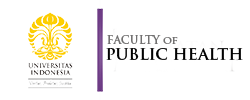Systematic Literature Review: Physical Work Environment Factors Associated with Work Fatigue in Hospital Nurses
Abstract
Keywords
References
Applebaum, D. et al. (2010) ‘The Impact of Environmental Factors on Nursing Stress, Job Satisfaction, and Turnover Intention’, Journal of Nursing Administration, 40(7–8), pp. 323–328. doi: 10.1097/NNA.0b013e3181e9393b.
Association, C. N. (2010) ‘Nurse Fatigue And Patient Safety’, Canadian Nurse.
Azmoon, H. et al. (2013) ‘The Relationship between Thermal Comfort and Light Intensity with Sleep Quality and Eye Tiredness in Shift Work Nurses’, 2013.
Bazazan, A. et al. (2019) ‘Fatigue as a mediator of the relationship between quality of life and mental health problems in hospital nurses’, Accident Analysis and Prevention. Elsevier, 126(January), pp. 31–36. doi: 10.1016/j.aap.2018.01.042.
Eivazzadeh, M. et al. (2019) ‘The Association between Noise Annoyance and General Health among Iranian Nurses at Tabriz Pediatric Hospital’, 8(4), pp. 190–198.
Fang, J. et al. (2008) ‘Factors influencing fatigue in Chinese nurses’, Nursing and Health Sciences, 10(4), pp. 291–299. doi: 10.1111/j.1442-2018.2008.00407.x.
Gander, P. et al. (2019) ‘Fatigue and nurses’ work patterns: An online questionnaire survey’, International Journal of Nursing Studies. Elsevier Ltd, 98, pp. 67–74. doi: 10.1016/j.ijnurstu.2019.06.011.
Griepentrog, J. E. et al. (2018) ‘Bright environmental light improves the sleepiness of nightshift ICU nurses’. Critical Care, pp. 1–9.
Hengky Ardian (2019) ‘HUBUNGAN ANTARA STRES KERJA DENGAN KELELAHAN KERJA PADA PERAWAT DI RUMAH SAKIT UMUM DAERAH ( RSUD ) Hengky Ardian Stress is an adaptive response to a situation that is perceived to challenge or threaten a person ’ s health . Work stress in nurses is one o’, 1(2), pp. 16–21.
Hermawan Ady Prayoga, Irwan Budiono, E. W. (2014) ‘Hubungan Pencahayaan, Intensitas Kelainan, D A N Mata, Refraksi Kelelahan, Dengan Pada, Mata Para, Tenaga Wonogiri, Sumarso’, Unnes Journal of Public Health., 3(4), pp. 81–87.
Iman Dianata, Ali Sedghia, Javad Bagherzadea, M. A. J. and A. W. S. (2013) ‘Objective and subjective assessments of lighting in a hospital setting : implications for health , safety and performance’, (December 2014), pp. 37–41. doi: 10.1080/00140139.2013.820845.
Iva Noviyanti dan Supriyadi (2020) ‘Hubungan Kondisi Kerja dengan Kelelahan Kronis Pada Perawat di Ruang Rawat Inap RSUD Wonosari’.
Joseph, A. et al. (2007) ‘Sound Control For Improved Outcomes in Healthcare Settings’, (January).
Kawatu, P. A. . and Akili, R. H. (2016) ‘Hubungan Antara Masa Kerja dan Shift Kerja dengan Kelelahan Kerja pada Perawat di Rumah Sakit Umum Daerah Noongan Kecamatan Langowan Barat Kabupaten Minahasa Tahun 2016’.
Konkani, A. and Oakley, B. (2012) ‘Noise in hospital intensive care units — a critical review of a critical topic’, Journal of Critical Care. Elsevier Inc., 27(5), pp. 522.e1-522.e9. doi: 10.1016/j.jcrc.2011.09.003.
Lee, J. et al. (2020) ‘Heat Stress and Thermal Perception amongst Healthcare Workers during the COVID-19 Pandemic in India and Singapore’, 2.
Mahmood, A., Chaudhury, H. and Valente, M. (2011) ‘Nurses ’ perceptions of how physical environment affects medication errors in acute care settings’, Applied Nursing Research. Elsevier Inc., 24(4), pp. 229–237. doi: 10.1016/j.apnr.2009.08.005.
Nur Indah Ritonga (2016) Faktor-Faktor Yang Mempengaruhi Kelelahan Kerja Perawat Baru Lulusan PSIK UIN Jakarta. Unibersitas Islam Negeri Syarif Hidayatullah Jakarta.
Oksandi, H. R. and Karbito, A. (2020) ‘Faktor-Faktor yang Berhubungan Dengan Kelelahan Kerja Pada Perawat’, 1(1), pp. 0–7.
Olson, J. A. et al. (2019) ‘Developing a light-based intervention to reduce fatigue and improve sleep in rapidly rotating shift workers rapidly rotating shift workers’, Chronobiology International. Taylor & Francis, 00(00), pp. 1–19. doi: 10.1080/07420528.2019.1698591.
Querstret, D. et al. (2020) ‘International Journal of Nursing Studies Improving fatigue risk management in healthcare : A systematic scoping review of sleep-related / fatigue-management interventions for nurses and midwives’. Elsevier Ltd, 106. doi: 10.1016/j.ijnurstu.2019.103513.
Riska Pramitasari (2016) Pengaruh Masa Kerja dan Shift Kerja Terhadap Kelelahan Kerja Pada Perawat Inap di Rumah Sakit PKU Muhammadiyah Surakarta. Universitas Muhammadiyah Surakarta.
Sukmaretnawati C, Rosa EM, W. S. (2013) Pengaruh stres kerja perawat terhadap perilaku implementasi patient safety di IGD RS Panembahan Senopati Bantul. Universitas Muhammadiyah Yogyakarta.
Vasconcelos, S. P. et al. (2011) ‘Factors associated with work ability and perception of fatigue among nursing personnel from Amazonia Fatores associados à capacidade para o trabalho e percepção Ocidental’, Rev Bras Epidemiol, 14(4), pp. 688–697.
DOI: 10.59230/njohs.v2i2.4695
Refbacks
- There are currently no refbacks.







.png)
